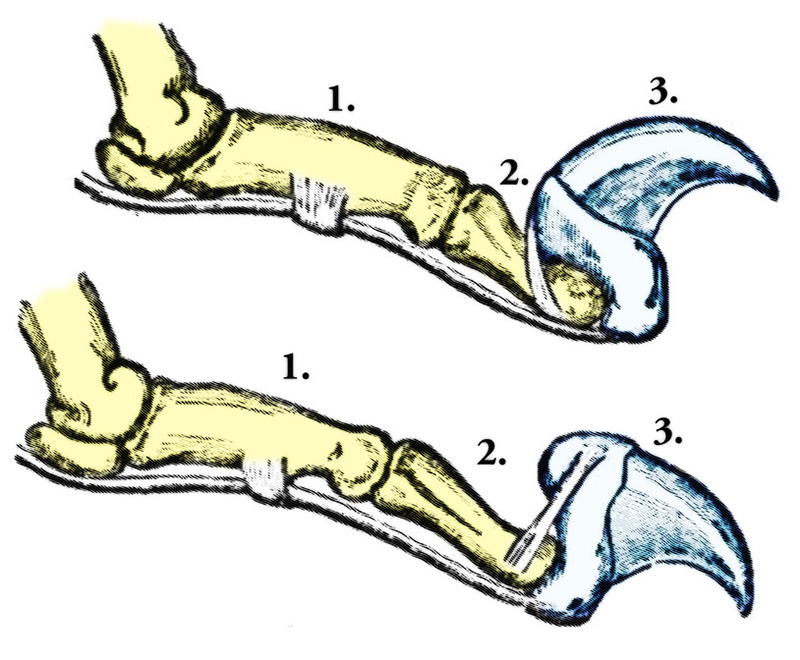Sharp division

Onychectomy (on-uh-KEK-tuh-mee) is the procedure’s medical name, but opponents of declawing call it amputation.
They’re right as rain.
However it’s done, whether by scalpel or laser or the discomfitingly named “guillotine” tool, declawing is, put simply, the complete removal of phalange #3, analogous to removal of the fingernail and last bone of a human finger. Nor need one look hard at all to find horror stories, often accompanied by graphic photos and video, of declawing disasters. “If you’re that worried about your furniture,” so the message goes, “then don’t get a cat!”
Declawing is illegal or viewed rather dimly as an option of last resort in over two dozen countries, ours not among them. Here’s what the American Veterinary Medicine Association (AVMA) has to say on the subject: Where scratching behavior is an issue as to whether or not a particular cat can remain as an acceptable household pet in a particular home, surgical onychectomy may be considered.
Translation: What the British, the French and the Italians consider bald-faced animal cruelty, Yankee vets, on an official level at least, allow as an optional safeguard against premature upholstery failure. And quite honestly, folks, I’m pretty sure that upholstery failure is the only real leg they have to stand on, no matter how much declawing advocates might warn against the possibility of cats blinding young children.
Crippled cats, then, vs. blind and bleeding toddlers. May the best half-truth spin … I mean win.
![]()
Intermission
![]()
Consider the plight of the average shelter cat, shuffled from one foster home to the next, spending its weekends in noisy adoption display cages, always in danger of being sucked back into a system that, in this country alone, euthanizes four to five million companion animals every year. Adult cats also are in direct competition with kittens, especially purebred cattery-got kittens, for the “forever homes” they seek. The odds are so stacked against adult cats, in fact, that some adoption agencies waive their already nominal adoption fees. It’s heartbreaking.
Here’s more from the AVMA: Scientific data do indicate that cats that have destructive scratching behavior are more likely to be euthanatized, or more readily relinquished, released, or abandoned, thereby contributing to the homeless cat population.
I’m a potential cat owner who’s perfectly willing to adopt an adult cat, would prefer to do so actually, which I gather makes me something of a rarity. I’m also in a position to provide my new housemate with private accommodations par excellence, which might make me rarer still. I wouldn’t know. I do know, however, that it will be harder for a cat with front claws to enter my paradise than for a camel to pass through the eye of a needle.
Regardless, if I’m understanding the anti-declaw lobby correctly, they’d rather their cats live lives of quiet desperation than with somebody like me.
And presumably die by lethal injection, if it comes down to it.
I wonder where the cats stand on this issue.